Introduction to Roman mythology. A curated selection of Ancient Rome myths and legends originally from Rome, their origins and significance.
Roman mythology is the collection of ancient Rome myths and legends that form the basis of ancient Roman religion and belief.
We know Rome’s myths and legends from ancient sources and authors, who recorded the most popular stories of Roman Gods and heroes.
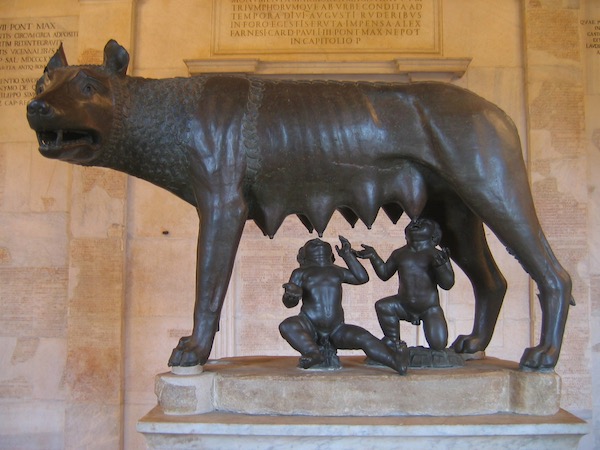
As well as an invaluable source of information about Roman history and beliefs, Roman myths and legends are often highly entertaining.
Roman mythology fascinates me.
I am a Roman history graduate from the University of Rome and my studies gave me the privilege to be able to read ancient sources in the original language as ell as in academic translations.
Today, we look at the most important myths from Ancient Rome and famous Roman legends you may enjoy.
But first, let’s see some fundamental facts about Rome mythology that will help put these myths in context.
How do we know Roman mythology?
Our primary sources of information about Roman mythology are ancient Roman writers and authors who wrote about it.
The most notable sources on Roman mythology we can access today are:
Livy (Titus Livius), who wrote the historical masterpiece Ab Urbe Condita, an account of the origins of Rome and, therefore, of the legends associated with it.
Virgil (Virgilius), who wrote the Aeneid, an epic poem about the divine origins of Rome
Ovid (Ovidius), who detailed the intricacies of the Roman calendar and its religious festivities in the book Fasti
Dyonisus of Alycarnassus, who wrote Roman Antiquities, a history of Rome detailing major events, religion and beliefs.
Is Rome mythology the same as Greek mythology?
Roman religious and culture inherited many elements from Greek culture.
Many of Rome’s most important Gods are originally from Greece and many myths the Romand knew and made their own where originally from there.
However, Rome also has its own myths and legends and these original Roman myths are often the most interesting to understand what made Rome unique.
Their origin is often very ancient and has roots in the culture of the Etruscan, Latin and Italic populations that inhabited central Italy a the time of Rome’s foundations.
Difference between myths and legends
Myth and legends often overlap.
For this article on Roman mythology, we include both and follow the standard understanding of the difference between roman myths vs roman legends:
Roman myths traditional stories that explains the beliefs of a people about the natural and human world, often involving gods, demigods and epic hero. The are highly symbolic in nature.
Roman legends: traditional story about the past, often based on historical events and then romanticised and modified to suit the educational needs and spiritual values of a certain time.
The most famous myths and legends of Ancient Rome of Roman origin
Please note: I have not included in this list myths and legends from Geek mythology such as those of Cassandra, Io or Hercules, and many others adopted by the Romans but not born in Rome itself.
The myth of Janus
Janus is one the most important ancient Roman gods, commonly represented as a man with two faces, one looking ahead and one looking behind.
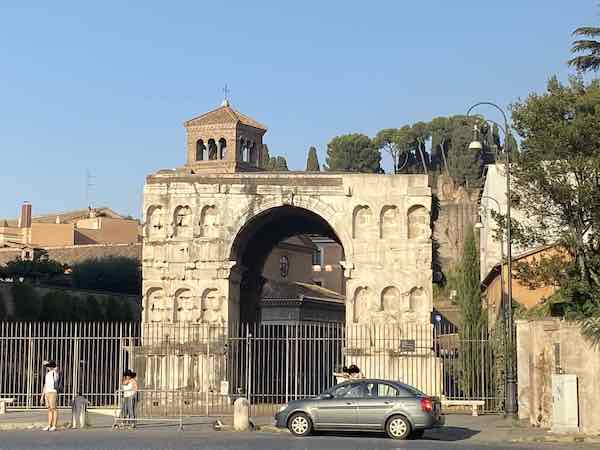
His legend says that Janus was born a man and ruled over the ancient population of Latium, the region of Rome, bringing to the people good laws and rules.
Janus lived on the Janiculum hill and, one day, encountered Saturnus, the God of agriculture.
Saturnus has recently been overthrown by Jupiter, so Janus offered him to reign together.
Thankful for this act, Saturnus brought a Golden Era to the region and rewarded Janus with the gift of seeing both the past and the future.
This is a seminal myth in Roman mythology and unique as it tells us about a God that is originally from Rome and with a strong connection with the land.
The myth of Aeneas, Rome’s heroic ancestor
An overview of Rome’s most important myths must begin with a mention of Rome’s semi-divine ancestor, Aeneas, whose adventures are the foundation of the history of the city.
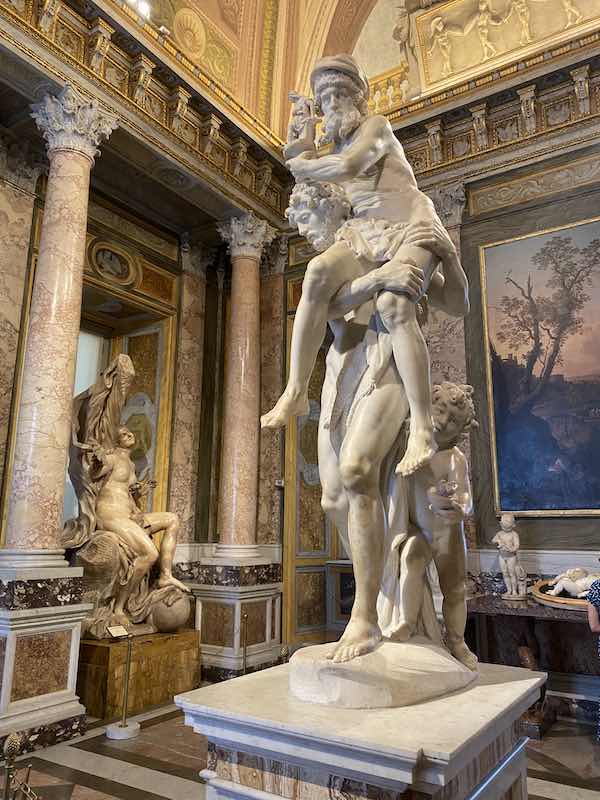
We learn about Aeneas from Virgil, who devoted to him his most famous masterpiece: the Aeneid.
Aeneas was the son of the Goddess Venus and Anchises, a mortal from the city of Troy.
When the Greek captured Troy and sacked the city, Aeneas fled the city and took to the sea carving with him his father, his son Ascanius and the Troy’s Lares and Penates, the deitieis protecting family and the State.
After long peregrinations, Aeneas settled in central Italy and founded a new city inhabited by Trojans and protected by the same deities: Lavinius.
As we will see below, Romulus and Remus are descendants of Aeneas so, according to Roman mythology, Aeneas is the progenitor of Rome’s people and a direct connection between Rome and Venus herself.
Fun fact: You can see a statue commemorating this important event in Roman mythology in the Borghese Gallery.
Romulus, Remus and the She-Wolf
Another important ancient Roman myth connected to the origin of the city is that of Romulus, Remus and the she-wolf.
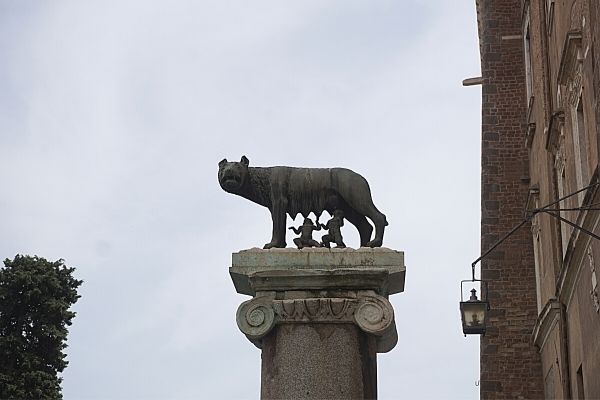
According to the legend, around the first half of the VIII century BC there were trouble in Albalonga, the town in central Italy founded by Ascanius, Aenea’s son.
Numitor but his brother, Amulius, seized power and took the seat for himself.
To protect himself from revenge, Amulius killed Numitor’s son and forced his daughter Rhea Silvia to become a Vestal, a priestess to the Goddess Vesta sworn to virginity.
He wanted to prevent Rhea Silvia for having children, who may one day seek revenge.
Despite her religious role, however, Rhea Silvia got pregnant with the God Mars and gave birth to two twins: Romulus, future founder of Rome, and Remus.
Amulius imprisoned Rhea Silvia and ordered the killing of the twins but a merciful servant put them in a basket and put them in the river Tiber instead, hoping for someone to find them and rear them.
This someone came in the form of a she-wolf, who fed and protected the twins until a local pastor, Faustulus, found them and adopted them.
The she-wolf, aka the Capitoline Wolf as she is also called, is still nowadays one of the most important symbols of Rome.
Fun fact! By involving the God Mars in the birth of Romulus, ancient Romand effectively stated that the city ancestors where two of the principal deities of the Roman pantheon and two of the most potent natural forces: Venus, goddess of love, beauty and procreation, and Mars, God of war and agricultural prosperity.
The legend of the Foundation of Rome
According to the legend, Rome has a birthday: the 21st of April 753 BC.
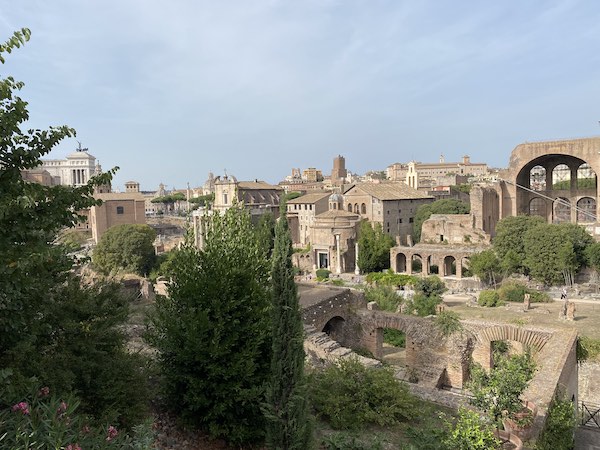
On this day, twins Romulus and Remus, sons of the God Mars and Rhea Silvia, decided to found a new city.
However, they couldn’t agree on a location, so they came up with a system: each of them would pick a spot and wait for an auspicious signal from the Gods showing a divine preference for one or the other.
Looking for auspicious signs was typical in Ancient Rome and too many forms, including that or looking at the sky to spot flocks of birds, the system the twin chose.
Remus placed himself on the Aventine Hill and quickly saw a flock of 6 birds.
Romulus places himself on the Palatine Hill and quickly after his brother spotted a flock of 12.
The two bothers couldn’t agree on the interpretation of the sign: Remus claimed he saw the birds first but Romulus that he saw the highest numbers.
They came to a fight that ended with the death of Remus and they left Romulus as the sole founder of the new city, with he called Rome.
The legends of the taking of the Sabines (Ratto delle Sabine)
Another important ancient Roman legend connected to the foundation of Rome is that of the taking of the Sabines.
According to the legend, right after its foundation Rome suffered from a lack of women.
To solve this problem, the Romans tried to negotiate with the Sabines, an Italic people living in northern Lazio, trying to convince them to give Rome their women so that the city could grow.
The Sabines refused and the Romans came up with a plan: they invited to the city the Sabines, under the pretence of religious games, and then captured the women against their will.
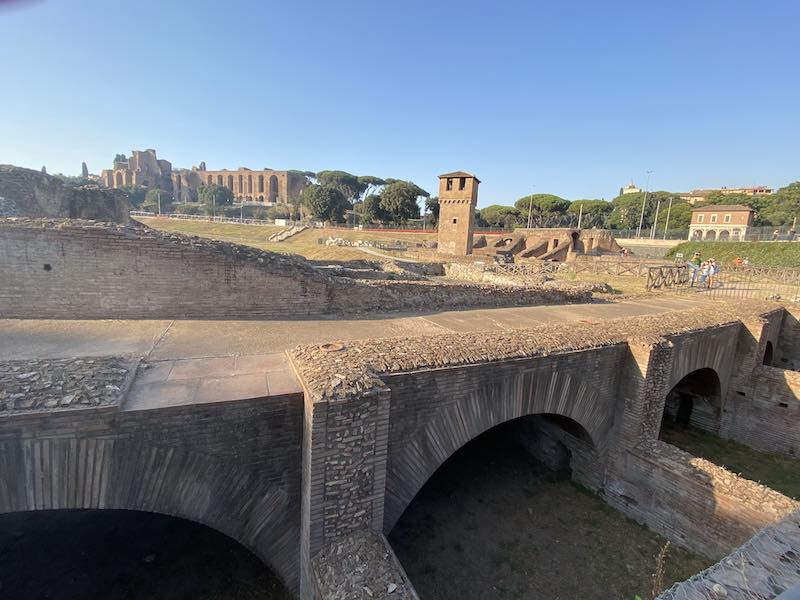
War ensued; the Sabine’s kind Titus Tatius entered Rome with the aid of a young woman called Tarpea and battles began.
To prevent a bloodshed, the women themselves came to the rescue, pleading for an end of hostilities.
The plea worked and they came to a compromise: the women would move to Rome but not be subject to violence. Rather, they would enjoy civil rights and the two populations founded into one.
The legend of Tarpea
The legend of Tarpea is part of the legend of the taking of the Sabines.
Tarpea was a young Roman woman, daughter of Spurius Tarpeus, the keeper of the Capitoline rock.
Vain and avid, Tarpea fell for the promises of riches by Titus Tatius and betrayed the Romand opening the city gates to the Sabines’ army.
Her act didn’t go unnoticed: as a punishment for her betrayal, she got killed by getting pushed down the Capitoline rock, which still now takes the name of Rupe Tarpea.
Need to know: in historical times, killing people by throwing them people off the Tarpeian Rock was a common way to administer the death penalty in Ancient Rome.
The myth of Romulus’ death
Roman mythology tells us the peculiar legend connected to the death of Romulus.
According to Roman myths, when Romulus died, he took to sky and became a God by the name of Quirinus.
This event is recorded as taking place neat the River Tiber, where we now see the Mausoleum of Augustus.
This is not by chance.
Augustus wanted to be seen as a new founder of Rome.
Placing his own mausoleum where the Romulus’ deification happened, was a strong signal of his connection with Rome’s legendary founder.

The Roman myth of Egeria and Numa Pompilius
According to the legend, Roman King Numa Pompilius was a devout man who loved to stroll in the woods surrounding the city of Rome.
During this peregrinations, he encountered the nymph Egeria, who inhabited this area, and they fell in love.
During their relationship, Egeria helped Numa Pompilius to bring positive reforms in Rome, including the creation of a Roman calendar that pleased the Gods.
When the Kind died of old age, Egeria cried so much she turned into a water spring, which still produced drinking water today.
Egeria’s wood and sources till exists: you can see them along the road we know call Appia Pignatelli.
The legend of Horatii and Curiatii
The longed of Horatii and Curiatii is set during te kingdom of Tullo Ostilio, the third of the seven kids of Rome (673-642 B.C.).
At that time, Rome was at war with the city of Alba and it was decided that a duel would determine the outcome of such war.
Three Roman brothers, the Horatii, would fight three bothers from Alba, the Curiatii.
At the start, the Curiatii seemed to prevail and killed two of their Roman adversaries.
The third Horatii brother, however, survived, and single handedly killed the three Curiatii, sealing Rome’s victory.
His success, however, displeased his sister.
Due to marry one of the Curiatii bothers, she broke down in laments when she saw his dead body.
Not tolerating her reaction to what he perceived was an important victory of the Roman people, he killed her.
When put under trial for murder, was absolved.
The most important archaeological remain connected to this legend is the tomb of the Horatii and Curiatii on the IV mile of Ancient Via Appia.
The most famous, later representation of this Roman myth is a well known painting by Jacques-Louis David now on display in the Louvre in Paris: The Oath of Horatii.
The legend of Horatius Cocles
Horatius Cocles is a legendary Roman hero from the time of Tarquinius Superbus and the war between Rome and the Etruscans.
Ancient sources tells us that the Etruscans, led by King Porsenna, were close to entering the city of Rome and had stationed their camp on the far end of Sublician Bridge (now in Rome center).
One day, a terrible battle erupted on the bridge: to save his soldiers, Horatius ordered them to retreat and faced the Etruscan army alone, winning the war.
The is the first of several Roman myths connected to King Porsenna, which is at the center of several other stories of Roman mythology.
The legend of Gaius Mucius Scaevola
The legend of Gaius Mucius Scevola is linked with the war between Rome and the Etruscans in the time of the Tarquinus Superbus.
Mucius Scevola was a Roman general in charge of infiltrating the Etruscan camp and kill the Etruscan King Porsenna.
While successful in the first part of his plan, Mucius Scevola mistook a sribe for the king, killed the wrong person and was captured.
Brought in front of the King, he admitted his mistake and declared he would punish his right hand by placing it onto a red-hot grill.
Impressed by this gesture, Porsenna set him free.
While thanking him for his mercy, Scevola told the King that he was only the first of three hundred valiant Roman men ready to kill him.
Terrified by this prospect, the myth tells us that Porsenna started peace negotiations with the Romans and posed an end to the war.
The Roman legend of Clelia
The legend of Clelia is also set at the time of the Etruscan war but has a woman at its center.
As part of the peace negotiations mentioned above, the Romand has given to Porsenna nine girls, which he kept as hostages in his camp.
The girls tired to escape and, under the leadership on one of them called Clelia, threw themselves in the Tiber to try and reach Rome swimming.
The Etruscan saw them and brought the back to Porsenna who questioned Clelia. She readily admitted to have been the brain being the escape and declared she would have no hesitation to try again.
Impressed by her bravery, Porsenna let her go and the girls were able to return to their families.
The legend of Lucrezia
The ancient Roman legend of Lucretia is connected with the end of the Kingdom of Rome and the birth of the Roman Republic.
According to Livy, Lucretia was a Roman matron whose beauty caught the attention of Sextus Tarquinius, the son of the seventh King of Rome: Tarquinius Superbus.
Married and uninterested in an affair, Lucretia refused Sextus’ advances but he didn’t accept her refusal and violated her agains her will.
Lucretia told her husband about the violence and, in despaired, put an end to her own life.
To vindicate her, her husband Collatinus and his friend Junius Brutus instigated a popular revolution that overthrew the Taruquinii and started the Roman Republic.
Collatinus and Giunius Brutus where the first Roman consuls, top magistrates of the newly founded republic of Rome.
The legend of the birth of the Tiber Island
According to ancient sources, the end of Tarquinius Superbus is at the origin of an extraordinary fact: the birth of Tiber Island!
When Collatinus and Brutus took power, they threw in the river all the belongings of the now-deposed king, which included large quantities of hay.
The hay bales were so numerous, they accumulated in the the middle of the river Tiber and turned into in an island, which brought prosperity to Rome as an important trade route.
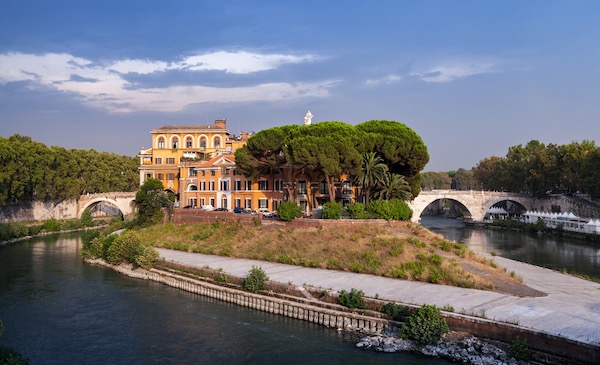
The legend of Coriolanus
Coriolanus is a legendary at the center of an ancient Roman myth, then made famous by Shakespeare in his work Coriolanus.
According to the legend, Coriolanus became very unpopular in Rome when the told the Senate to withhold food from the people, unless they renounced their magistrates.
Accused of treason, he left the city and found refuge with the Volsci, enemies of Rome, about to carry a war agains the city.
Before the hostilities began, the Romans sent ambassadors to him to find a compromise: one of them was Coriolanus’ mother.
When Coriolanus saw her, he went to hug her, but she stopped him asking to know, first, if she was about to hug a son or an enemy. Touched by her words, Coriolanus brought back the enemy army, stopping the war.
The legend of the Capitoline’s Geese
The legend of the Capitoline Geese takes place in year 390 BC.
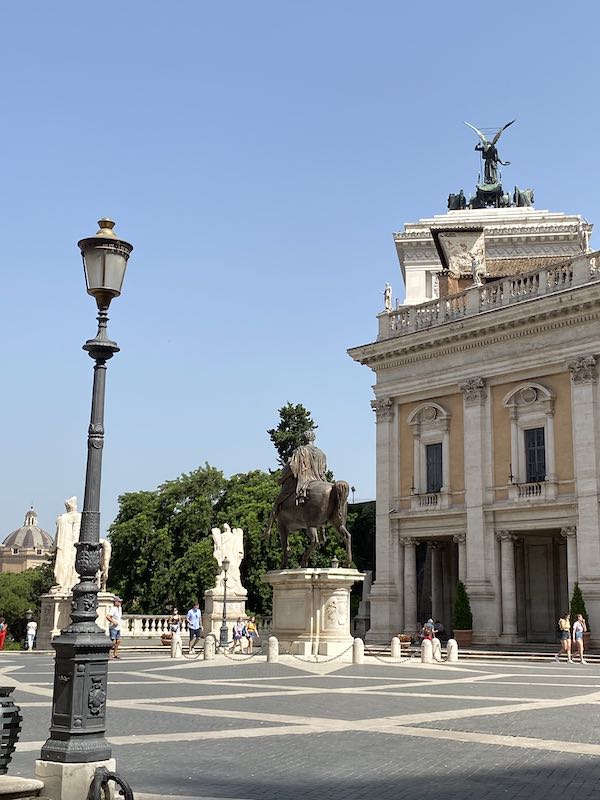
At that time, the city of Rome was under terrible pressure due to the attack of the Gauls, who had managed to reach the city and force the Romans to find refuge on top of the Capitoline Hill, the last safe place in the city.
One night, the Gauls were making progress towards capturing the hill; however, their movement disturbed the geese that inhabited the temple of Juno, to whom they were sacred.
The geese made a terrible noise that woke up the Romans and alerted them of the danger.
As a result, the Romand were able first to negotiate a truce, then to win over the Gauls. The Roman general associated with this victory is Camillus, remember d ny the myth for the sentence: Non auro, sed ferro, recuperanda est patria, which means: not with gold but with iron (aka, fighting), we are going to take our land back.
The legend of Aesculapius on the Tiber Island
According to ancient sources, during the III century B.C. a terrible plague pestered the city of Rome.
Desperate for some respite, the Romans sent a ship to the Greek city of Epidaurus, sacred to the God Aesculapius, protector of medicine and health and represented as a snake (you can read here >>> about ancient Roman Gods and their symbols)
While they were busy with their rituals, a snake entered their ship: they interpreted it as a sign of favour from the God and traveled back to Rome.
While on the Tiber, the snake jumped off and found refuge on the Tiber Island.
The Romans took it as a sign that that the place was sacred to the God and built a temple and a hospital.
To remember the event, they also rebuilt the island in the shape of a ship, a peculiar design we can still see today.
The Roman Myth of Caesar’s comet (Sidus Julius)
The myth surrounding the appearance of Caesar’s comet is very different from others and it was born as part of Imperial Propaganda, rather than ancient Roman mythology.
However, it is such an important myth for understanding the Roman psyche, that it deserved a place in this list.
According to the legend, when Julius Caesar died in 44 BC, a comet appeared in the sky. The Romans interppered it as a divine sign that Caesar had become a God and gave it the name ‘Sidus Julius’, Julius’ Star (ala Julian Star).
Since then, Julius Caesar was worshipped in the temple called Temple of Divus Julius, still visible in the Roman Forum.
Ancient Rome most famous myths and legends meaning
Ancient Roman myths and legends have meaning that historians could partially identify.
| Roman Myth / Legend | Meaning/ Significance |
| The myth of Janus Bifrons | Rooting the history of Rome in that of Latium, strong divine connection between Rome location and its power |
| The myth of Aeneas fleeing Troy | Divine origins of Rome via Venus, mother of Aeneas |
| The myth of Rhea Silvia | Divine origins of Rome via Mars, father of the twins |
| The legend of the she-wolf | Connection with Rome and its terror and geography |
| The legend of Romulus founding Rome | Divine approval of the foundation of the city |
| The legend the taking of the Sabines | Legitimizes the power of Rome over neighbouring population |
| The legend of Tarpea | Warning story about betrayal and loyalty |
| The legend of the death of Romulus | Strengthens the idea of the divine origins of the city and the support of the Gods to its power. |
| The legend of Egeria and Numa Pompilio | Connection with territory and divinity of Rome origins |
| The legend of Horatii and Curiatii | Importance of individual courage in Roman Culture |
| Horatius Cocles | Importance of individual courage in Roman Culture |
| Mutius Scaevola | Importance of individual courage and loyalty in Roman Culture |
| Legend of Clelia | Importance of individual courage and loyalty in Roman Culture |
| Legend of Lucretia | Importance of purity and loyalty in Roman Culture |
| Legend of Coriolanus | Importance of loyalty in Ancient Rome |
| Legends of Tiber Island | Legendary explanations of the birth of significant geographical features. |
| Legend of Capitoline Geese | Divine protection over Rome for the Gods |
| Legend of Caesar’s comet | Important of Julius Caesar as seminal figure for the beginning of the Imperial times, divine support from the Gods to the city. |
I hope you enjoyed this quick introduction to Roman mythology and found these famous Roman myths and legends as fascinating as I do. Happy learning!
